Categories
- animatronics (12)
- apple (11)
- arduino (179)
- art (41)
- articles (121)
- artificial intelligence (11)
- automation (421)
- avr (205)
- bitcoin (3)
- breadboard (9)
- cameras (57)
- cars (26)
- cell phones (28)
- clothing mods (21)
- console mods (26)
- dangerous (94)
- desktop mods (24)
- embedded (5)
- flying things (54)
- fpga (22)
- gaming creations (108)
- interface (225)
- internet (17)
- laptop mods (6)
- lasers (22)
- linux (7)
- magnetic (3)
- medical (12)
- microcontrollers (51)
- misc projects (152)
- msp (12)
- music (124)
- pic (90)
- projects (23)
- pyroedu (76)
- raspberry pi (26)
- robots (312)
- security (36)
- sensors (307)
- software (200)
- solar (19)
- stamp (9)
- tools (149)
- tutorials (98)
- Uncategorized (45)
- usb (44)
- wireless (256)
Sponsors

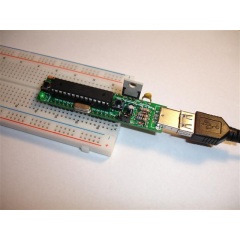
Posted February 12, 2014 by Chris
"The USnooBie is a microcontroller kit that does not require any sort of AVR programmer or USB-to-serial converters to load and run compiled code. It’s hardware design allows the user to develop low cost USB devices with Atmel’s AVR ATmega microcontrollers. It can also be used to develop projects which are not USB devices. It is even compatible with Arduino."
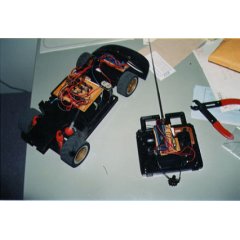
Posted January 13, 2013 by Chris
“We purchased an RC car, removed everything except the body and the motors, and replaced all of the circuitry with our own microcontroller-controlled network. We also built our own controller using just the existing case. For the transmission of control signals, we used a 418 MHz transmitter/receiver pair purchased from Abacom Technologies.”
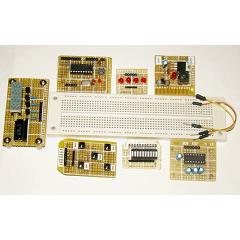
Posted May 28, 2012 by Chris
“Breadboards are a great tool for prototyping and testing electronics circuits. Here I am sharing with you some plug-in modules that I once made to make my breadboarding life easier. I have used these modules many times in the PIC experiments described in this blog. These modules serve very common functions that are required in most microcontroller circuits.”
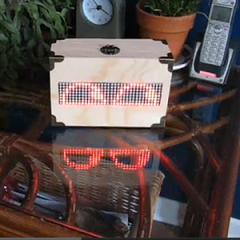
Posted April 1, 2012 by Chris
“Normally, Papydoo is asleep. The enclosure sits on top of a vibration sensor. Papydoo is waken up by a sufficiently strong vibration. Two eyes are then displayed on the LED matrix, wandering randomly around. After a few seconds with no vibration detected, the eyes close and Papydoo goes back to sleep.”
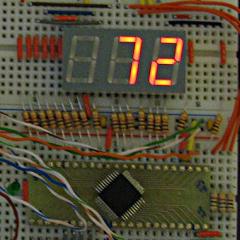
Posted March 24, 2012 by Chris
“This project was an excuse to learn about Verilog and programmable parts (cpld, fpga). I chose this project because someone asked about it on Usenet, and the generic response was “use a ROM” – but to get a ROM wide enough would have been expensive, and wasteful – most ROMs these days have many inputs and 8 outputs, we want one with few inputs and many outputs – 8 (or more) in and 21 out. I suggested a $1 CPLD instead (turns out you need a $2 CPLD), then decided to actually make one to see if it would work.”
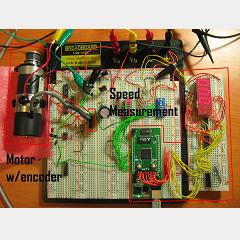
Posted September 6, 2011 by Chris
PWM signals are used all over the place, and for motor control they are a must. Varying the PWM signal will control speed and direction through most motor controllers. This white paper describes one way of making PWM signals with a Xilinx FPGA and also incorporating feedback control from the motor in the FPGA.
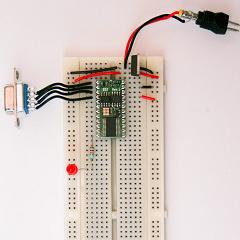
Posted August 14, 2011 by Chris
The Stamp is one of the best ways to get started in the world of microcontrollers. This tutorial shows you how to get started with a Stamp on a breadboard, the basic building block in hobby electronics.
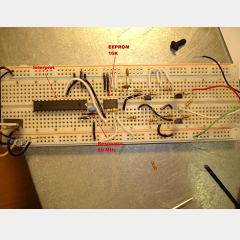
Posted August 7, 2011 by Chris
This article is short, sweet and to the point. Using some jameco and parallax parts this tutorial guides you through the process of getting started with microcontroller prototyping on a breadboard. The parts are all listed out and pictures included for clarity.
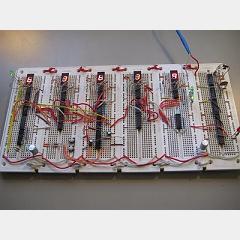
Posted June 20, 2011 by Chris
74xx TTL logic chips are widely available and cheap. Breadboards are built so that they fit perfectly , however the TTL clock created here shows you just how much can be done on them. This article shows you what it takes to create a TTL clock on breadboards with only jumper wire and TTL chips. Hardware schematics and demo videos are included.






